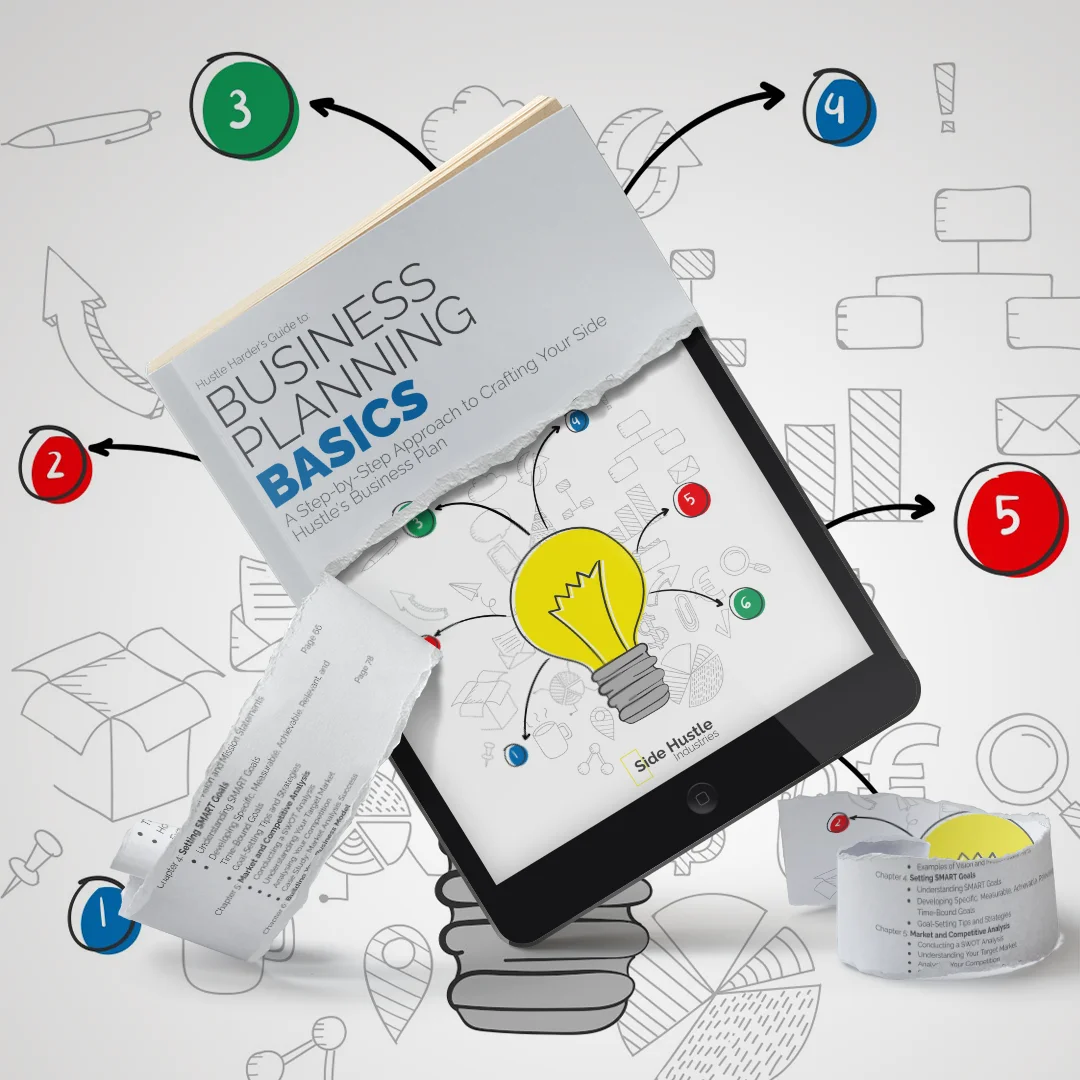
Selecting the right business model for your side hustle is a pivotal decision that can significantly impact your success and satisfaction as an entrepreneur. Your chosen business model should align with your goals, resources, and market dynamics. In this article, we will explore the process of selecting the right model for your side hustle and provide guidance on making an informed decision.
The Importance of a Well-Fitted Business Model
The business model you choose serves as the foundation for your side hustle. It outlines how your venture will create, deliver, and capture value. A well-fitted business model is crucial for several reasons:
- Alignment with Goals: Your business model should align with your goals as an entrepreneur. Whether you seek a steady source of income, aspire to build a scalable startup, or are looking for lifestyle flexibility, your business model should support these objectives.
- Resource Efficiency: Different business models have varying resource requirements. Selecting the right model ensures efficient use of your available resources, such as time, money, and skills.
- Market Fit: Your business model should resonate with the preferences and behaviours of your target market. It’s about delivering what your customers want in a way that meets their needs.
- Scalability: Some business models are inherently more scalable than others. If your ambition is to grow your side hustle significantly, your chosen model should accommodate this growth.
Competitive Advantage: A well-suited business model can set you apart from competitors in your niche. It can be a source of differentiation and customer loyalty.
Steps to Selecting the Right Business Model
Selecting the right business model for your side hustle involves a methodical process that takes into account your goals, resources, market conditions, and personal preferences. Follow these steps to make an informed decision:
1. Define Your Goals
Begin by defining your entrepreneurial goals. What are you looking to achieve with your side hustle? Consider both short-term and long-term objectives. Common goals include:
- Generating additional income.
- Replacing a full-time job with your side hustle.
- Achieving rapid business growth and scaling.
- Building a lifestyle business that offers flexibility.
- Pursuing a passion or interest while earning income.
Your goals will serve as the foundation for your business model selection. They will guide your choices in terms of the type of business you start and the strategies you employ.
2. Assess Your Resources
Evaluate the resources you have available for your side hustle. Resources can encompass:
- Financial capital: The amount of money you can invest in your venture.
- Time: The number of hours per week or month you can allocate to your side hustle.
- Skills and expertise: Your knowledge and abilities that can be leveraged in your business.
- Network: The contacts and relationships that can be useful in your entrepreneurial journey.
- Physical assets: Any equipment, space, or tools you possess.
Understanding your available resources will help you identify a business model that matches your resource capacity.
3. Research the Market
Market research is a critical step in selecting the right business model. You need to have a clear understanding of your target market, including:
- Demographics: Who are your potential customers? What is their age, gender, income, and location?
- Preferences and behaviours: What do your customers value, and how do they make purchasing decisions?
- Competition: Who are your competitors, and what are their strengths and weaknesses?
- Trends: Are there any market trends that can inform your business model selection?
Market research helps you tailor your business model to the specific needs and expectations of your target audience.
4. Explore Different Models
Familiarise yourself with various business models to identify those that could work for your side hustle. Some common business models include:
- E-commerce Model: Selling products or services online.
- Subscription Model: Charging customers a recurring fee for access to a service or products.
- Freemium Model: Offering a free basic version of a product or service and charging for premium features.
- Marketplace Model: Connecting buyers and sellers and earning a commission or fee for facilitating transactions.
- Brick-and-Mortar Model: Operating physical stores or offices where customers visit to buy products or receive services.
- Franchise Model: Replicating an established business model by operating under an established brand.
- Direct Sales Model: Selling products or services directly to customers through personal relationships.
- Affiliate Marketing Model: Promoting products or services of other companies and earning a commission for each sale or lead generated.
- Agency Model: Offering specialised services to clients, such as marketing, advertising, design, or consulting.
- Manufacturing Model: Producing physical products for sale to wholesalers, retailers, or consumers.
- Service Model: Providing specialised skills, knowledge, or labour to clients.
Research and understand each of these models to determine which aligns best with your goals, resources, and market conditions.

5. Consider Legal and Regulatory Requirements
Certain business models may have specific legal and regulatory requirements. Depending on your location and industry, you might need licences, permits, insurance, or compliance with specific laws. Ensure that your chosen business model can meet these requirements.
6. Seek Feedback and Advice
Reach out to mentors, advisors, or other entrepreneurs who have experience in your chosen business model. They can provide valuable insights and guidance based on their own experiences. Their input can help you make an informed decision and avoid common pitfalls.
7. Test and Iterate
Your initial choice of a business model doesn’t have to be permanent. As you launch your side hustle, be open to experimentation and adaptation. You might discover that certain aspects of your chosen model need adjustment based on customer feedback and market dynamics.
Matching Your Side Hustle with the Right Model
Selecting the right business model for your side hustle is a dynamic process that involves careful consideration of your goals, resources, market, and personal preferences. It’s important to remember that your choice isn’t set in stone; it can evolve as your business grows and as you gain a deeper understanding of your market and customer needs. Ultimately, the best business model is the one that allows you to create value, serve your customers, and achieve your entrepreneurial goals. Your side hustle is your opportunity to shape your entrepreneurial journey according to your unique vision and aspirations.

*Also available on Amazon in Kindle, Soft Cover & Hard Cover formats. —> Click Here.
